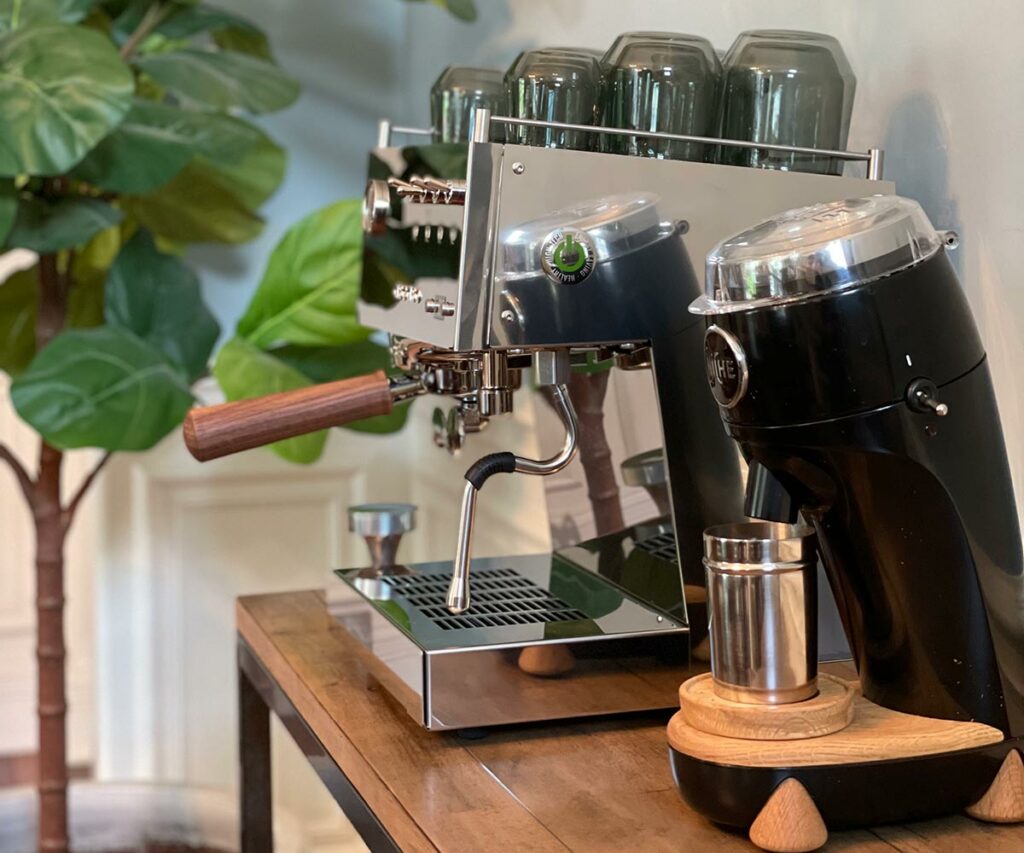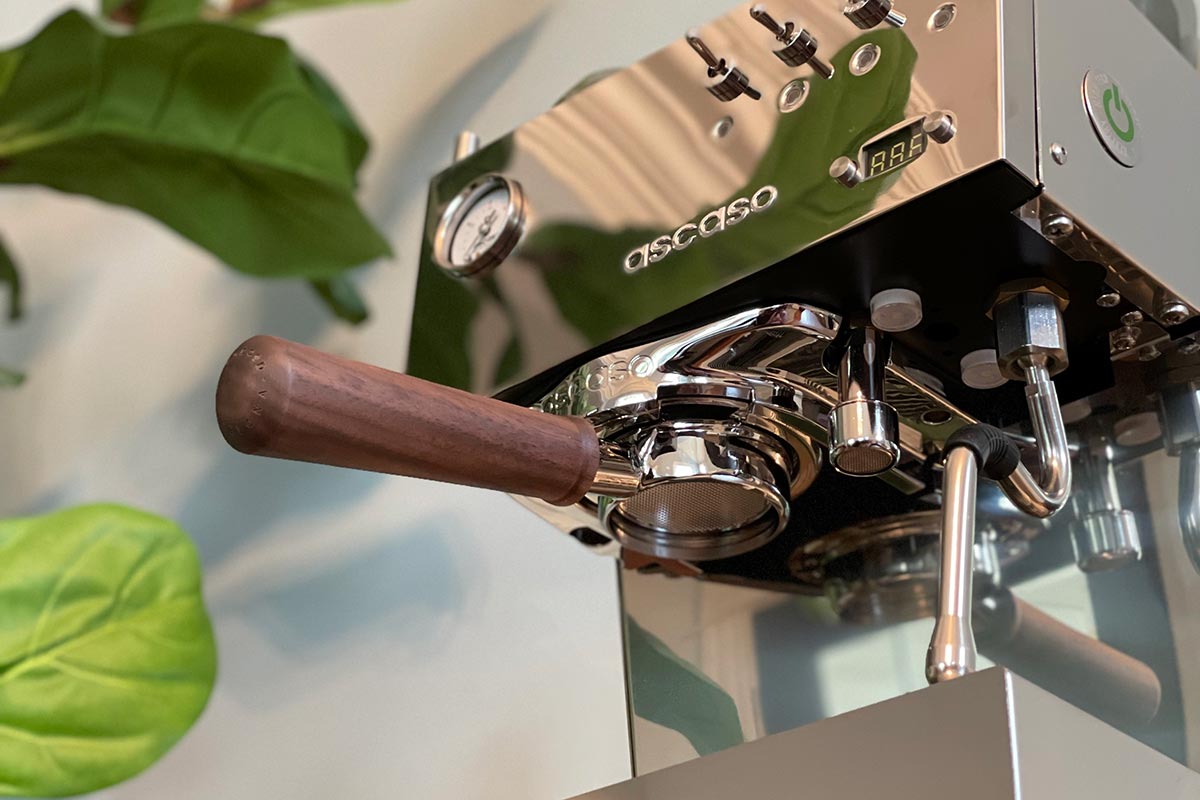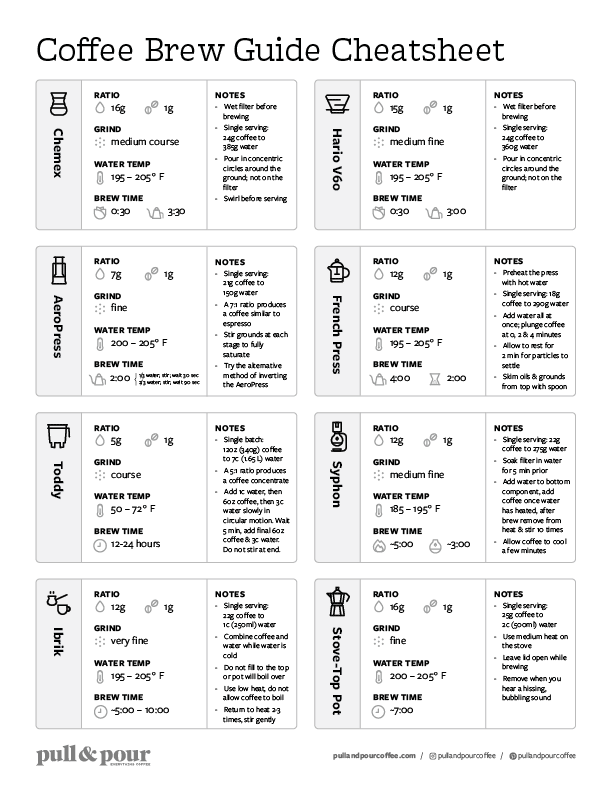While I’ve been making espresso at home for years, it’s really been in the last few months with the addition of my Ascaso Steel DUO espresso machine that I dove into the ins and outs of espresso. I’ve watched hours of videos, read countless articles and pulled more shots than I can count in an effort to hone my espresso skills. This article is a simplified list of some of the easiest, yet most important tips I’ve found to help make better espresso at home.
1. Select the proper espresso machine
This one is probably obvious, but figured it would be a solid place to start. There are hundreds of home espresso machines out there that range from $100 to $5,000+. It’s hard to know how much you really need to spend when starting out, but it’s important to compare features to make sure whatever machine you select can do everything you need it to. Some questions I found helpful when selecting a machine were:
- How manual or automatic is the machine? Machines range from fully automatic to completely manual. Depending on how much control you want to have when making espresso will determine how automatic or manual you want your machine to be.
- What sort of control options does the machine have? Can you control water temperature, pre-infusion, pressure settings, etc.? Every option gives you more control and flexibility, but also requires more work to adjust.
- What is the size of the machine? Some machines can get quite big, so you want to be sure to find one that fits well in the space you have in your kitchen.
If you want to make great espresso at home, but are on a tight budget, check out some of the manual espresso machine options available.
Ultimately I ended up with the Ascaso Steel DUO espresso machine for myself. It checked off a lot of the boxes I wanted in a machine including:
- 58mm portafilter: 58mm is the professional size, so it works well with a lot of accessories:
- PID (Proportional-Integral-Derivative): PID on the Steel DUO allows me to control temperature, pre-infusion, power-saving modes, and single or double shot programming
- Dual thermoblocks: The DUO has two thermoblocks, one for coffee and one for steaming. This helps being able to pull a shot and steam milk immediately after it without needing the machine to come back up to temperature.
- Pre-infusion: The ability to change pre-infusion time is part of the PID controls and I have found has made a big impact on the quality of shots I can pull with the machine.
- Beautiful aesthetic: Not necessarily imperative to the final espresso it makes, but the machine sits on my counter all the time, so I wanted it to look good!
2. Use the proper grinder
Being able to grind your coffee properly is critical when making espresso at home. When selecting a grinder for home espresso making, there are four criteria I found to be critical:
- Ability to grind very fine. To grind for espresso, your grinder will need to be able to grind very fine (much finer than for pour over or other brew methods). You’ll need a fairly high-quality burr grinder to do this. A blade grinder simple won’t be able to create the consistency or the fineness necessary for espresso. Even many burr grinders either won’t be able to get fine enough or won’t be able to produce a consistent grind at the fineness you’ll need.
- Ability to adjust grind settings in small increments. I always thought the issue with many grinders was simply being able to get fine enough for espresso. While that can be an issue, I’ve recently found the larger issue is the control you have at those fine settings. Many grinders can get very fine, but then don’t give you the control necessary to make adjustments at that fineness to dial in your shot. The Niche Zero, while expensive, it so good for espresso because it has a stepless dial that allows you to make micro adjustments at extremely fine settings.
- Ability to grind on-demand. Having freshly ground coffee is even more important for espresso than for other brew methods. Using a single-dose grinder or another type that allows you to grind specific amounts and on-demand is critical.

3. Use fresh coffee
Fresh, high-quality coffee is important regardless of what brew method you use to make coffee. That said, I’ve found fresh coffee to be particularly important for espresso. While coffee more than a few weeks old has the potential to be a bit flat and less complex in pour over brew methods, older coffee can pull a completely different shot with espresso. I’ve found it to be much harder to get well-extracted shots with older coffee and try to keep my espresso beans as fresh as possible.
4. Optimize your water
As with any coffee you make at home, water is a critical ingredient. While your tap water may work fine to make espresso, it could also be a primary reason your espresso isn’t tasting as good as it could. A few things to keep in mind with your water:
- Test your water. If you aren’t sure about the hardness or composition of your water, you can buy a water testing kit for $25 on Amazon, which will give you a detailed view of your water composition.
- Keep your water hardness between 35-85 ppm. The Specialty Coffee Association of America recommends your water hardness to be between 35-85 parts per million. This range is the sweet spot to ensure your water has some mineral content (which is important for the best tasting espresso), but isn’t too hard. You can use the above test or a TDS Meter to test your water’s hardness.
- Use a mineral supplement to optimize your water. There are a lot of mineral enhancement options for your water including Third Wave Water, Perfect Coffee Water and Aquacode Coffee Brewing Water. You simply mix the packet with a gallon of water to optimize it for espresso. Some, like Third Wave Water have options specifically tailored to espresso as well.
5. Focus on puck preparation
Preparing your coffee puck for espresso is one of the most important steps in the espresso making process. Making sure you have a well distributed, evenly tamped puck is a critical step to make sure you pull a well extracted shot of espresso. A few elements I’ve implemented in my process that have helped include:
- After grinding the coffee, use a dosing funnel to help make sure no grounds are lost. You can also weigh your shot when in the portafilter to make sure you know exactly how much coffee you’ve dosed.
- Distribute grounds using a WDT tool to stir the grounds and help break up any possible clumps.
- Gently tap around the portafilter to level out the grounds. Be sure not to bang your portafilter vertically because it can accidentally pre-tamp your coffee bed.
- Use a distribution tool to precisely distribute the grounds and prep the bed for tamping. I have a custom one from Saint Anthony Industries that works really well, but you can find some inexpensive ones on Amazon.
- Use a tamping tool that allows you to replicate the tamping pressure or make minor adjustments. I use a tamper from Saint Anthony Industries that has their Bachmann Accu Drive Numeric System built into it, which allows you to make minute adjustments to your tamping pressure, which helps dial in espresso.
6. Change one variable at a time
This tip applies to any coffee making process, but holds especially true for espresso. When dialing in espresso, it is very important to change one variable at a time. This could be dosing, grind size, puck preparation process, pre-infusion timing, espresso machine temperature, etc. It doesn’t matter what it is, but it is important to only tweak one thing at a time, so you know what sort of impact it has on the final shot. If you change multiple variables at the same time, it is impossible to know what ultimately was the impact of each.
7. Keep the portafilter on the machine while preparing your coffee
Keeping your portafilter on the machine helps it get to temperature before the brewing process. This helps make sure as little temperature is lost as possible during brewing, which leads to a more even extraction. It also supposedly can result in more oils being released in the extraction and therefore a fuller shot with more crema. A final benefit of keeping the portafilter warm before brewing is to assist in the pre-infusion process.
8. Measure, measure, measure
If you are used to making pour over coffee, the concept of measuring your coffee, water and timing your brew is not a new one. With espresso even more than pour over, it is important to weigh and time everything—especially if you are trying to dial in a shot. When making a shot of espresso you should weigh: the coffee beans you use in your puck, the time it takes to pull your shot and the grams of espresso the shot produces. Each of these give you data points about the shot that you can adjust to dial in your espresso.
9. Be consistent
In order to replicate the process of making a shot time and time again, it is important to be consistent every time you make a shot of espresso. Follow the same steps to prep the puck and pull the shot (unless you are intentionally changing something to change a variable in the process). Use the same grinder, tamp with the same amount of pressure, use the same WDT/distribution process, etc.
10. Start making your espresso immediately after adding the prepared portafilter back to the machine.
The heat from the group head on your espresso machine can burn your prepared coffee puck if you leave it on the machine too long before starting the espresso process. For this reason, you should be sure to start pulling your shot immediately after adding your portafilter back onto the machine.
11. Keep your espresso machine & equipment clean
Cleanliness is next to godliness, right? Well, it also is a requirement for good espresso. Dirty and poorly maintained equipment can have all sorts of issues with the espresso making process. To ensure your espresso always tastes as good as possible, be sure to keep your espresso machine and all the equipment used in the process clean.
The Bottom Line
Making home espresso can be one of the most rewarding ways to make coffee at home; in my opinion, there is no better way to bring the cafe experience to your home. Hopefully these tips help you in your espresso journey, help you make better espresso at home and help make the process a bit easier. If you have questions or want to share any comments, be sure to get in touch on Instagram.


